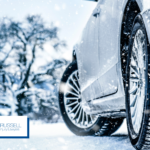Fog forms when cool air passes over a warm body of water or moist land – so usually when there is a big difference in temperature between the ground and the air. When the humidity is high enough and there is enough water vapor or moisture fog is sure to form.
While it is quite the eerie sight to see – it can be completely unnerving for those who have to drive somewhere and navigate through the dense fog that hangs over the roads making visibility difficult. It takes a great deal of finesse and caution when heading out on the roads, and the ability to exercise a lot of patience in order to safely arrive at your destination.
With Canadian weather providing everything across the spectrum for drivers – here are some tips to help navigate thick fog while driving.
Don’t drive unless you absolutely have to
Unless the trip is absolutely imperative – put your travel plans on pause until the weather clears up. It might mess up your schedule a bit, but it’s not worth taking the risk.
Make sure your headlights are working properly
When conditions do start to get foggier, you need to turn your headlights on. Don’t just assume they already are – many cars’ dials light up even when the headlights are turned off these days, which can be misleading. If the fog is growing increasingly thick, turn your fog lights on – but only if the density of the fog keeps increasing.
Your complete checklist for fog driving
- If the fog is too dense to continue driving, you need to pull completely off the road and try to position your vehicle in a safe parking area. Turn on your emergency flashers, in addition to keeping your low-beam headlights on.
- Be patient while driving. There can’t be a rush when driving in fog. Never pass someone because you won’t have the ability to see oncoming traffic.
- Slow down gradually at every turn and make sure your speed is kept at a suitable condition if you need to break quickly.
- Do not follow too closely to the car in front of you – their reaction time might be slowed causing you to have to break quickly.
- Don’t speed up suddenly, even if the fog seems to be clearing. You could find yourself suddenly back in fog immediately.
- Leverage the use of pavement markings to help guide you. Use the right edge of the road as a guide, rather than the centre line with oncoming traffic ahead.
Remember, if the trip isn’t worth it, then you need to rearrange your day accordingly. Fog drastically impacts your driving and visibility, especially at night. So if the trip isn’t necessary – then stay at home.
If you have been injured, and need legal assistance, call #1000 on your cell phone for free. We will offer you a free claim assessment.






